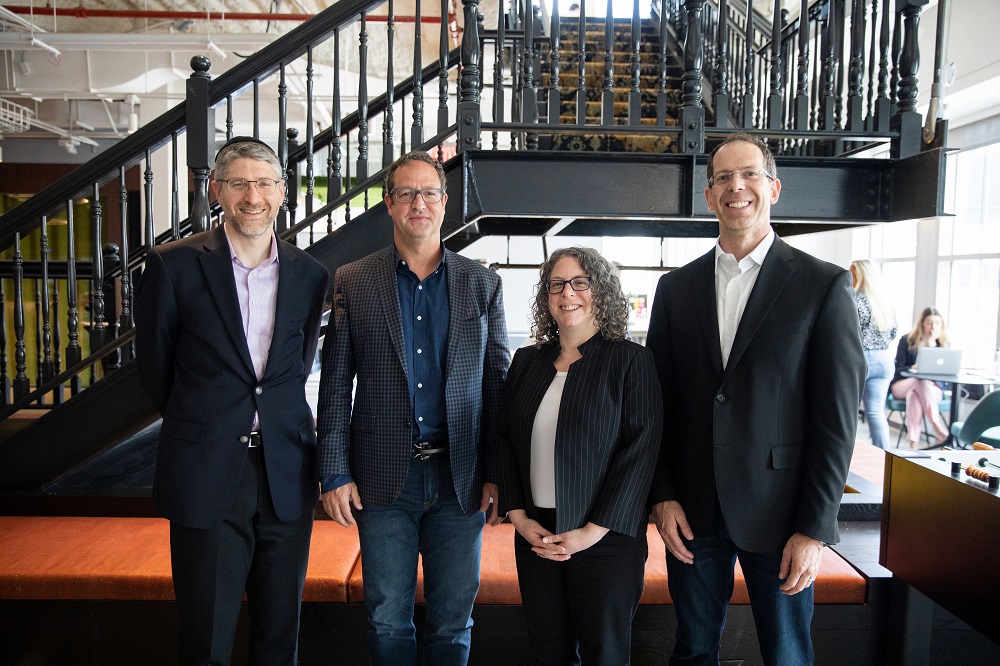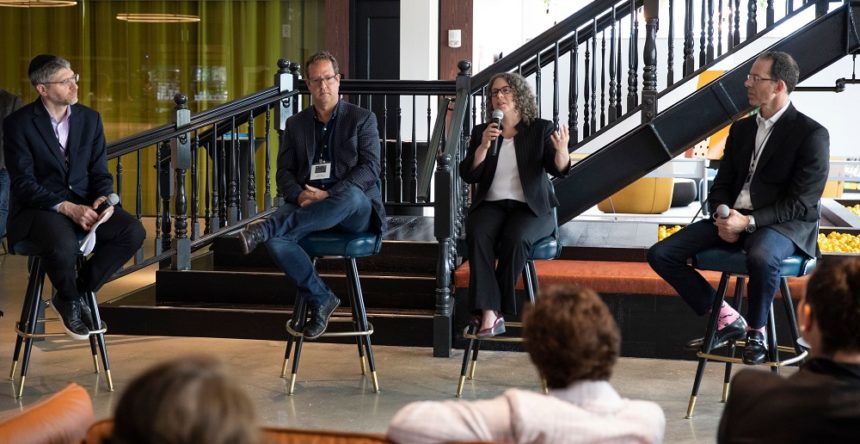How close are we to personalizing healthcare? This was the theme of MM&M and Deloitte Digital’s aptly named event, Humanizing the Health Experience, which took place at Deloitte Digital’s downtown NYC offices earlier this month.
The enlightening panel discussion featured Mark Miller, managing director of life science advertising marketing and commerce at Deloitte, Dr. Hannah Bayer, chief scientific officer, Datacubed Health, and Ian Marks, VP, R&D innovation at GlaxoSmithKline. MM&M’s executive editor Marc Iskowitz, who moderated the panel, asked each participant what, in their opinion, are the core motivators among patients that inform behavior change programs.
Bayer, a neuroscientist by training, said that while there is certainly no “silver bullet,” rewards can be an incredibly powerful motivator.
“People like positive reinforcement,” she noted. “In most cases, the carrot is going to be more powerful than the stick, so you have to figure out how to create goals that are achievable by understanding the basic principles of what drives people, and then figuring out how to specifically apply them to your use cases.”
Bayer added that social interactions, such as encouragement from peers or live chats with others in an online community forum, can also serve as a motivator.
“Peloton is an excellent example of a brand that has seamlessly leveraged rewards and social interaction to drive behavior change,” she said. “Their technology rewards people for high scores on the leaderboard as well as for how often they’re getting on the bike. Then when you’re plugged into their software, the teachers are able to call out to you while you’re riding at home. They also make it easy to post your scores on Facebook to encourage sharing.”

Datacubed Health; Ian Marks, GSK
“So how can we apply that same way of thinking when it comes to patient compliance and adherence?” Iskowitz asked the group.
Marks said that when it comes to compliance, both gamification and AI can be incredibly useful.
“You can have the best drug out there, but if people aren’t taking it the way they’re supposed to, you lose both the efficacy and the safety elements,” he explained. “Compliance is one of the things that behavioral science can actually promote, whether through gamification or the use of AI, because you can actually start provoking people to ensure they’re taking their medicines on time.”
He added that compliance has become an especially important topic as the overall responsibility for health has shifted from the physician to the patient.
“It’s very scary for some people to think they have total control over their own health,” he said. “They’re used to their doctors overseeing everything, which is why these different technologies and diagnostic tools have become so important. Patients can track when they’re taking their medications and can monitor things like high blood pressure or cholesterol on their own without relying on their doctor.”
“It’s kind of complex,” Marks continued, “but I think in the end your healthcare should be something that you own, that you’re driving and that you’re taking full accountability for. It should only be when you’re not able to manage it yourself that you need to escalate it to the care of a physician.”
Iskowitz noted that the transfer of responsibility from physician to patient has prompted an effort by the healthcare industry to reduce the gap in care that occurs between visits to the hospital or doctor’s office. Part of this approach is to rely on programs that share insights – a model that is scalable.
Miller said that in his experience, most programs tend to be short-term in nature. “One thing we’re trying to do differently now is we’re taking more of a holistic approach, or a long-term approach,” he said. “Pharma will always have an important role to play, but now it’s very often in support of other partners. It’s extremely important to understand the full ecosystem and how to connect the dots.”
One way to achieve this goal, he continued, is through the use of data and analytics.
“Tapping into online behavioral data can be hugely useful for brands,” he said. “Ninety-five percent of all engagement is online and not direct with brand, so if you’re able to identify those likely moments along the way where patients are at a pivotal point in their healthcare journey, there is a huge opportunity to learn and optimize in that moment.”
Bayer pointed out that for companies to fully capitalize on that optimization, they need to ensure that the apps and platforms they provide to patients give them the flexibility to customize their own experience. Users need to be able to isolate the components that work for them and remove those that don’t.
Marks concurred, noting customized platforms of this kind encourage patients to make a change in their healthcare routine.
“Patients need to understand why they should change from a solution that they are very comfortable with to one that’s completely unfamiliar,” he said. “They have to be able to both see the reward as well as track their performance in order to recognize that they’re actually improving. Most importantly, they need to feel like they can trust the advice and guidance they’re getting.”
Miller pointed out that one mechanism through which brands can increase the level of trust patients have for their platform is through partnerships with other reputable companies.
“Creating a healthcare ecosystem is so important,” he said. “You have to think very carefully about who the right partner for your company is by thinking about the business requirements, but also what will best meet the needs of patients. Figuring out how to work with the large retail pharmacies of the world who have massive loyalty program bases, and how to tap into those networks, is key. If you can balance short-term and long-term patient needs, and get an eclectic group of thinkers together to collaborate, truly great things can happen.”








